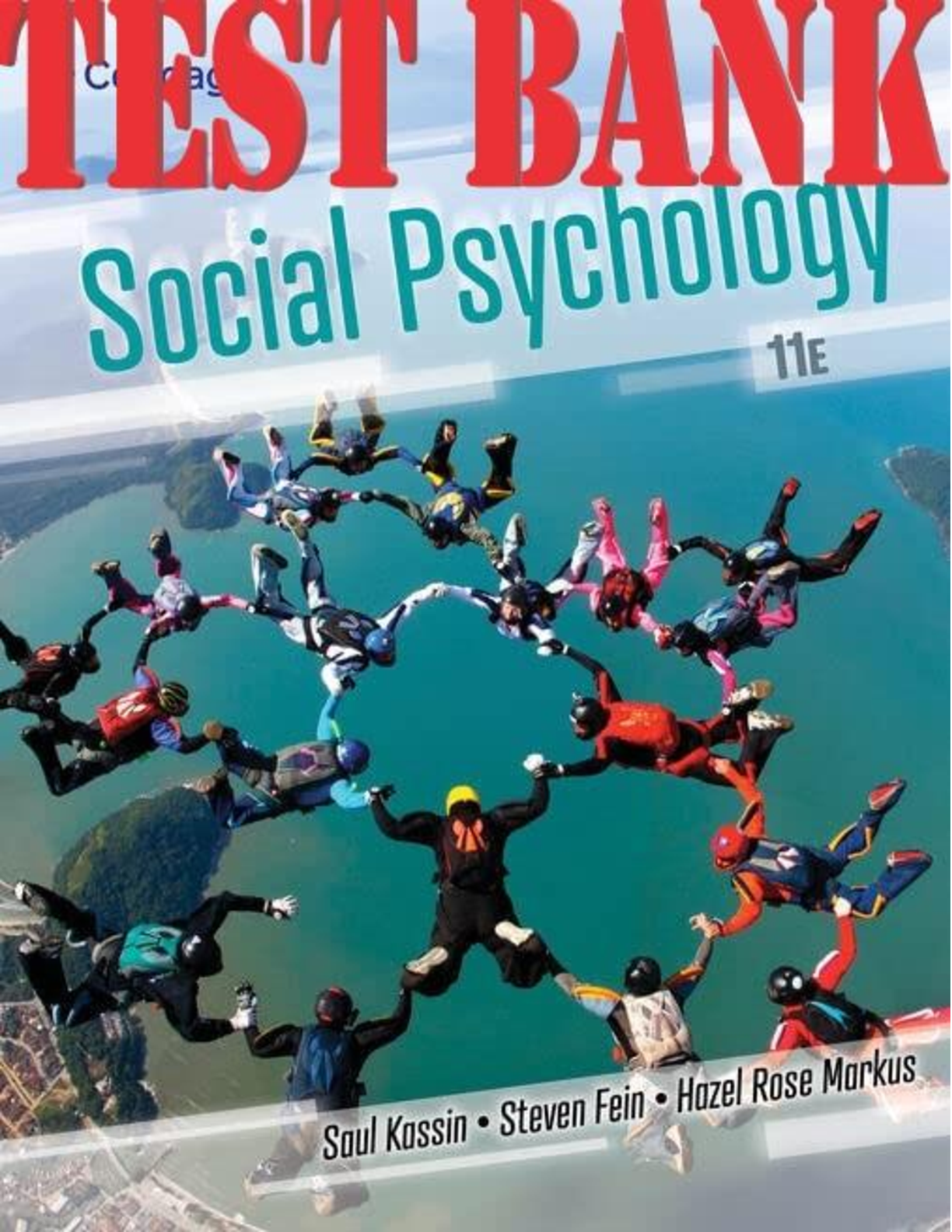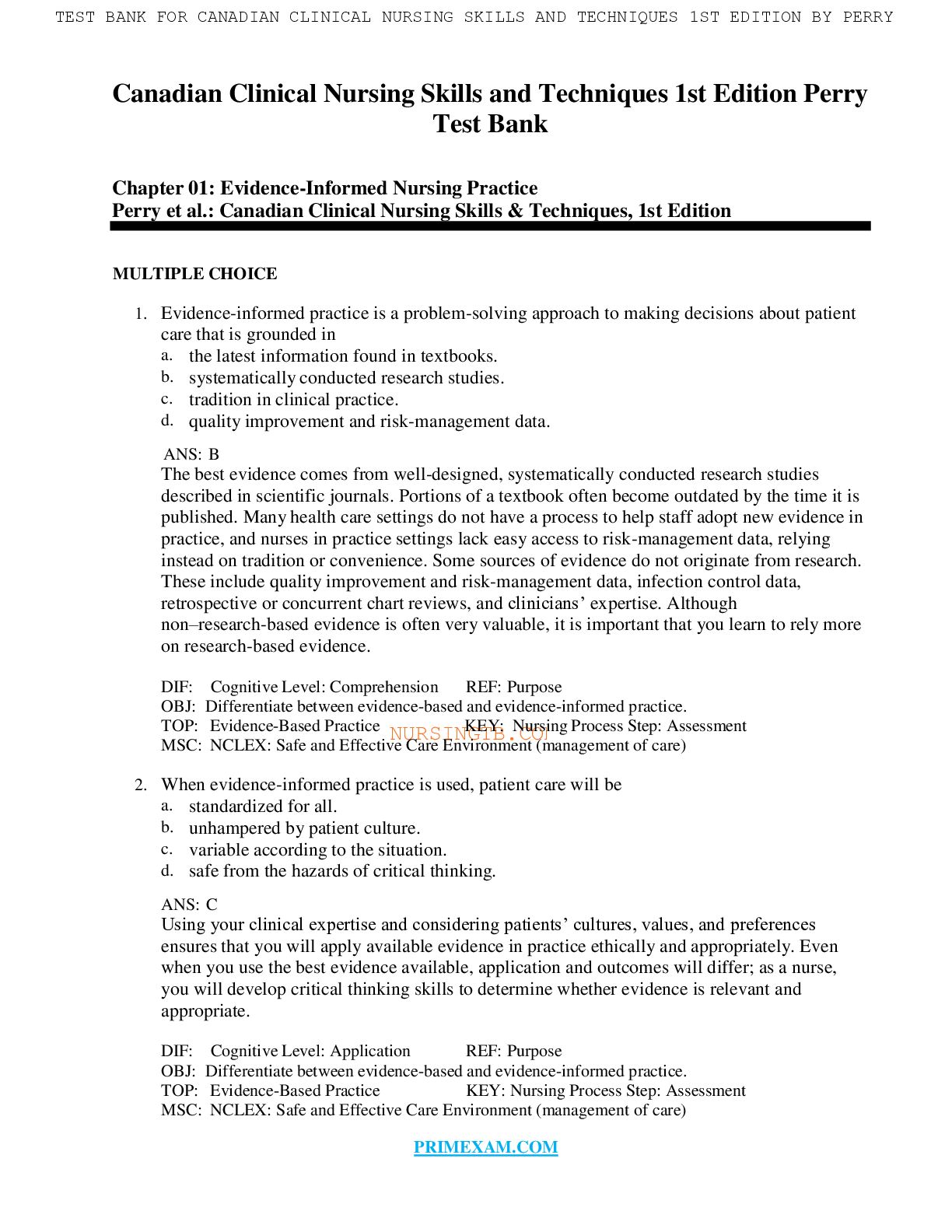Sociology > TEST BANKS > Social Psychology 11th Edition By Saul Kassin, Steven Fein, Hozel Markus TEST BANK (All)
Social Psychology 11th Edition By Saul Kassin, Steven Fein, Hozel Markus TEST BANK
Document Content and Description Below
TEST BANK Social Psychology 11th Edition by Saul Kassin, Steven Fein and Hazel Markus TABLE OF CONTENTS Chapter 1. What Is Social Psychology? Chapter 2. Doing Social Psychology Research. C... hapter 3. The Social Self. Chapter 4. Perceiving Persons. Chapter 5. Stereotypes, Prejudice, and Discrimination. Chapter 6. Attitudes. Chapter 7. Conformity. Chapter 8. Group Processes. Chapter 9. Attraction and Close Relationships. Chapter 10. Helping Others. Chapter 11. Aggression. Chapter 12. Law. Chapter 13. Business. Chapter 14. Health. Name: Class: Date: Chap_01_11e Indicate the answer choice that best completes the statement or answers the question. 1. Positron emission tomography (PET) and functional magnetic resonance imaging (fMRI) are technologies that enable social psychologists to a. record research participants’ true attitudes without their awareness. b. present visual stimuli to research participants for 100th of a second. c. see images of the brain as people think, feel, and behave. d. induce a particular mood state in people. 2. When Taka is teaching his social psychology class, he emphasizes that the field must encompass a range of research techniques and cultural perspectives if it is to flourish. Taka’s emphasis reflects a(n) a. contextualist orientation. b. empirical approach. c. “hot” approach to studying social behavior. d. pluralistic orientation. 3. Dr. White is using a recently developed technology to conduct research on how the brain responds to visual images that are culturally familiar or unfamiliar. Which of the following tools might he employ in his laboratory? a. Event-related potential (ERP) b. Electrooculography (EOG) c. X-ray images d. Phrenology mapping (PM) 4. The research of Jonathan Haidt (2012, 2017) addresses the question of whether we can understand the different concepts of morality that separate a. atheists and religious individuals. b. homosexual and heterosexual persons. c. older adults and younger adults. d. liberals and conservatives. 5. Floyd Allport’s social psychology textbook, published in 1924, is credited with a. establishing the field’s emphasis on experimentation and the scientific method. b. imbuing the field with a cross-cultural orientation. c. introducing the major theories of social psychology. d. bridging the “hot” and “cold” perspectives on behavior and cognition. 6. During the 1960s and 1970s, social psychologists who favored laboratory experiments rebuffed critics about the limitations of laboratory work by arguing that a. the theories being tested were historically and culturally abundant. b. the benefits of running these experiments outweighed the costs even if some studies were unethical. c. experimental studies were easier to conduct than nonexperimental studies. d. the theoretical principles being tested in the lab were widely applicable across eras and cultures. [Show More]
Last updated: 5 months ago
Preview 1 out of 422 pages

Buy this document to get the full access instantly
Instant Download Access after purchase
Buy NowInstant download
We Accept:

Reviews( 0 )
$24.50
Can't find what you want? Try our AI powered Search
Document information
Connected school, study & course
About the document
Uploaded On
Sep 15, 2024
Number of pages
422
Written in
Additional information
This document has been written for:
Uploaded
Sep 15, 2024
Downloads
0
Views
152


























